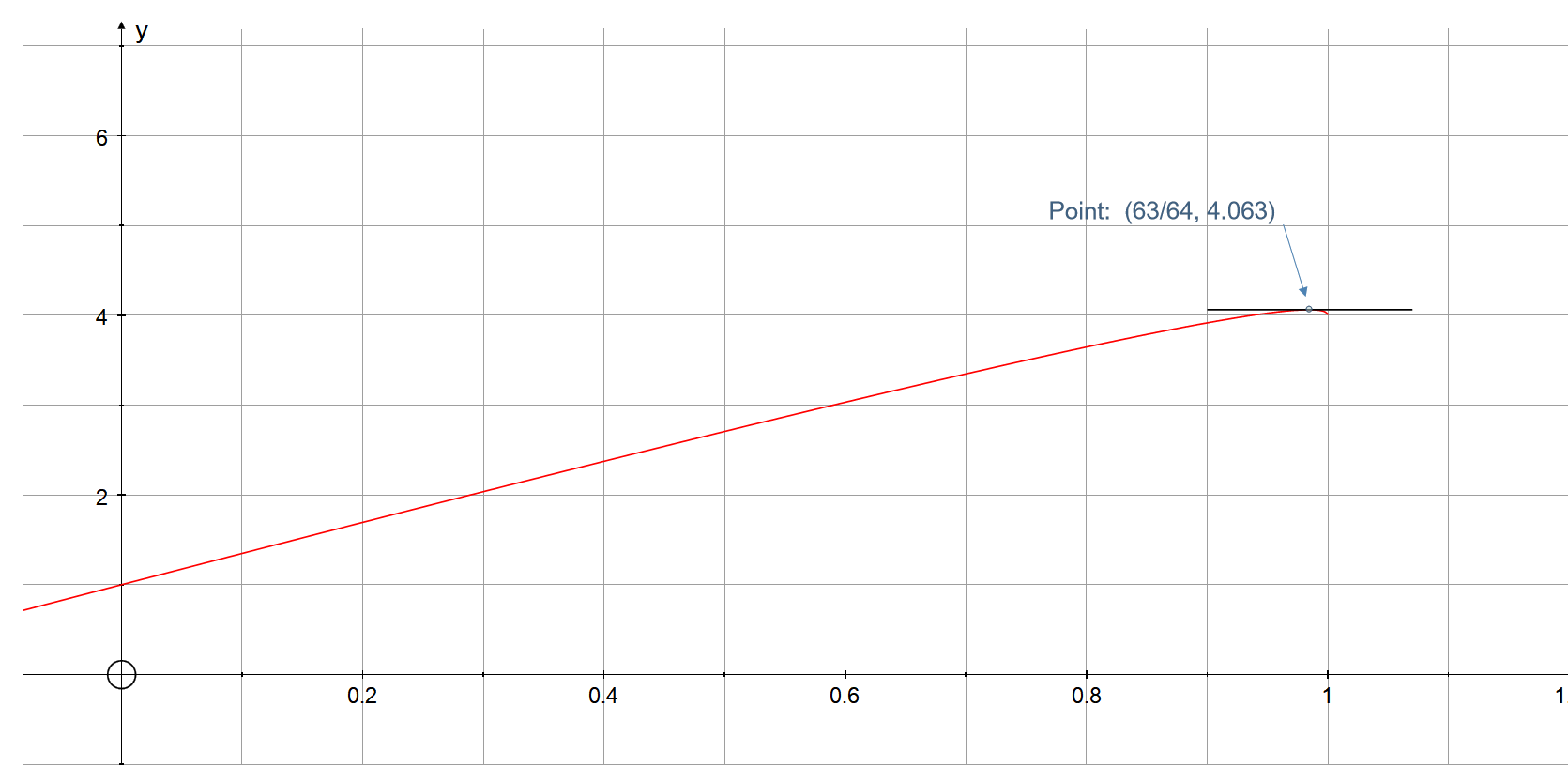At local maximum and minimum points the tangent is zero. We can use this to find where these points are. We first find the first derivative and equate this to zero.
Given #f(x)=4x+sqrt(1-x)#
#dy/dx(4x+sqrt(1-x))=4x+(1-x)^(1/2)=4+1/2(1-x)^(-1/2)*(-1)#
#=4-1/(2sqrt(1-x))#
Equate to zero:
#4-1/(2sqrt(1-x))=0#
#8sqrt(1-x)-1=0=>x=63/64#
Using the second derivative we know that if:
#(d^2y)/(dx^2)>0color(white)(888)#Minimum point.
#(d^2y)/(dx^2)<0color(white)(888)#Maximum point.
#(d^2y)/(dx^2)=0color(white)(888)#Maximum/Minimum or inflection point.
#(d^2y)/(dx^2)(4x+(1-x)^(1/2))=dy/dx(4-1/(2sqrt(1-x)))#
#dy/dx(4-1/(2sqrt(1-x)))=dy/dx(4-1/2(1-x)^(-1/2))#
#=0+1/4(1-x)^(-3/2)*(-1)=-1/(4(1-x)^(3/2))#
Plugging in #x=63/64#
#-1/(4(1-(63/64))^(3/2))=-4sqrt((1/64)^3)#
#-4sqrt((1/64)^3)<0#
#:.#
#x=63/64# is a maximum point.
This is confirmed by the graph:



